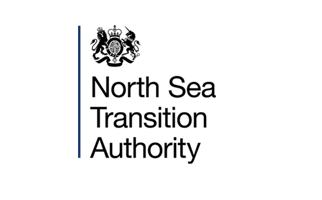
The NSTA operates a licensing regime that gives companies exclusive rights to search, bore for and get petroleum. Petroleum licences are issued after a competitive process, usually a licensing round.
Here you can find a downloadable copy of the NSTA Guidance on the Onshore Regulatory Regime. This guidance, which consolidates previously available guidance, sets out how the NSTA will normally consider stated matters and is not a substitute for any regulation or law and is not legal advice.
Licensing Regime
There have been 14 onshore licensing rounds to date. The last licensing round, the 14th Round, was held in 2014. As it stands, a decision on the timing of the next round has not yet been made. When a future round is announced, it will be placed in the London Gazette detailing the areas on offer and accompanying guidance is provided as to the requirements for applications. Bespoke guidance is produced for each round and is placed on the NSTA website. Here is the notice and guidance for the 14th Round
When the NSTA holds an onshore licensing round, it will assess applications for operator competency, financial capability, geotechnical analysis, understanding of relevant environmental sensitivities and the proposed work programme of any application submitted.
All companies on a licence share joint and several liability for obligations and liabilities that arise under it throughout the lifecycle of the licence. All companies on the licence share the rights conferred in the licence.
Licences can be held by a single company or by several working together, but in legal terms there is only ever a single licensee however many companies it may comprise.
Licensees are responsible for understanding the provisions of the licence; this includes adhering to notice periods and ensuring required NSTA approvals and consents are in place.
Prospective licensees must satisfy the NSTA that they have a place of business in the UK. This means at least one of the following:
- Having a staffed presence in the UK
- Being registered at Companies House as a UK company
- Having a UK branch of a foreign company registered at Companies House
To join a licence and take an interest in a producing field, a prospective licensee must either:
- be registered at Companies House as a UK company; or
- carry on its business through a fixed place of business in the UK
A ‘fixed place of business’ normally means a staffed presence. For further information see section 148 of the Finance Act 2003 or article 5 of the OECD Guidelines for Multinational Enterprises for more information.
Petroleum Exploration and Development Licence (PEDL)
A PEDL does not give permission for operations but it grants exclusivity to licensees, in relation to hydrocarbon exploration and extraction within a defined area. All operations require other permissions as appropriate, such as access agreement(s) with relevant landowner(s), Environment Agency (EA) permits, Health and Safety Executive (HSE) scrutiny, planning permission and Department for Energy Security and Net Zero (DESNZ) consent.
Since the 7th Round, except in special circumstances, PEDLs run for three successive periods or terms (The Petroleum (Production) (Landward Areas) Regulations 1995) these are:
- Initial term
- Second term
- Production period
Licence commitments are associated with each term of a licence. There are still extant older vintages of licences with prefixes (e.g. AL, DL, EXL, ML, PL) which have similar terms to PEDL licences.
For licences with The Petroleum Licensing (Exploration and Production) (Landward Areas) Regulations 2014 model clauses, a Retention Area Plan can be agreed. The plan must describe the exploration and appraisal activities that the Licensee intends to carry out in the Retention Area, and the timescales over which those activities are to be carried out.
A scanned copy of any extant licence can be found here – Licence documents
Exploration Licence (XL)
The NSTA also issues exploration licences (XL). A company that wants to explore by means of seismic or other surveys but does not seek exclusive rights to drill or produce can apply for an onshore exploration licence. Exploration licences are useful for seismic contractors who wish to gather data, or holders of production licences who wish to explore outside the areas where they hold or require exclusive rights.
An exploration licence grants rights to explore only (e.g. shoot new seismic data) not to drill or produce; and is non-exclusive, covering all acreage outside those areas covered by any of the corresponding production licences that are in force at the time.
If the holder of an exploration licence wishes to explore acreage covered by a production licence, permission is required from the holder of that production licence.
Exploration Licence application form
Consent for flaring and venting
Under the Energy Act 1976, as amended by the Gas Act 1986, the Secretary of State’s consent is required for the disposal of natural gas (whether at source or elsewhere) by flaring or unignited release into the atmosphere. There are a number of exemptions, including flaring covered by one type of licence and gas supplied by a public gas supplier.
Contact consents on 0300 020 1014 or email consents@nstauthority.co.uk for further details.
Methane Drainage Licence (MDL)
A Methane Drainage Licence is required if the operator or owner of a coalmine must capture natural gas to make the mine safe. Safety is a high priority for the NSTA, and the NSTA will consult the Coal Authority about each case to seek its advice about the safety issues that a case raises, and to ensure that the operations are consistent with the Coal Authority’s own regulation of the mine.
Each licence carries an annual charge, called a rental, set at the time of award. Rentals are due each year on the licence anniversary. Rentals are charged at an escalating rate on each square kilometre the licence covers at that date, with the exception of agreed Development Areas and Retention Areas, and exploration licences (XL) which incur a flat-rate rental. Rentals are designed to encourage licensees to decide which acreage to retain and to surrender acreage they do not want to exploit.
PEDL holders should make reasonable and sustained efforts to negotiate with landowners for any ancillary rights required to carry out licensed activities.
Where it is not practical to obtain such rights through private negotiations, the PEDL holder could consider applying for ancillary rights through the Mines (Working Facilities and Support) Act 1966 (the Mines Act).
Section 7(1) of the Petroleum Act applies the Mines Act for the purpose of enabling a licensee to acquire such ancillary rights as may be required for the exercise of the rights granted by the PEDL.
More guidance on applications for ancillary rights can be found here. The information in this document does not constitute legal advice. It is advisable for a licensee to take legal advice in connection with the making of an application under the Mines Act.
Operatorship Guidance
Licences stipulate that the licensee shall ensure that another person (including, in the case where the licensee is two or more persons, e.g. a company, any of those persons) does not exercise any function of organising or supervising all or any of the operations in pursuance of this licence. The only exception is if that person is approved in writing by the NSTA and the function in question is one to which that approval relates. This is called operatorship.
In considering any request for operatorship, which can occur either at the time of licence application or other times during the lifetime of a licence, the competence of the proposed operator is assessed by the NSTA, taking into consideration the following factors:
- technical experience and capability to supervise, manage and undertake the proposed operation;
- the proposed operator’s risk-assessment, hierarchy of decision-making, and plans for public engagement
The amount of information required will depend on the circumstances, including the complexity and scope of the planned activity. A new entrant or small company with little onshore experience should expect to provide more information than an established onshore operator.
Licensees and operators are encouraged to be a member of the UK Onshore Operators Group (UKOOG), which has worked with regulators to publish industry guidelines for best practice, which contain what is good industry practice and refer to the relevant legislation, standards and practices.
The NSTA will require a letter from the board of the proposed operator confirming scope of insurance or availability of necessary funds for any required remedial work.
A company wishing to discuss a case, and the criteria that the NSTA applies, should contact the onshore team (onshore@nstauthority.co.uk).
The information the NSTA may require is as follows:
Company details
- UK registered name, address and company number
- UK places of business – addresses, public contact email and telephone numbers
- website address and, during operations, a 24-hr telephone response line for members of the public
- primary contact for the NSTA and accountable Board member (email and telephone numbers)
Previous operating and technical experience
- details of any previous experience of supervising or carrying out drilling operations within the past two years, including location and description of the company’s responsibilities for those operations
- details of production within the past five years, including location and description of the company’s development responsibilities
- details of the proposed operator’s relevant emergency management experience
Management Structure and Strategy
- corporate governance, including names of the Board of Directors and Management Team and reporting roles
- organisational chart, noting role, location and identifying use of contractors
- summary of approach to risk-assessment and hierarchy of decision-making for wellsite and production operations
- monitoring and incident management plan
- community engagement plan
People
- CVs of the key personnel involved in decision-making, including their previous experience and the basis on which they are employed (e.g. part-time or contracted)
- key individuals responsible for key roles including geotechnical, health and safety, interaction with Local Planning Authorities, public engagement, environmental and drilling expertise describing which skills exist in-house and those that are contracted
Use of Contractors
-
- list areas of technical assessment or operations to be outsourced to contractors, and the name(s) of contractor(s) and contact information. Note that operators must retain overall responsibility and cannot subcontract their licence responsibilities and obligations
- description of operator’s relationship with the contractor, describing the decision-making process and what arrangements are in place to deal with any unexpected incidents
- track record of sub-contractors proposed for any activity for subcontractors and mechanism for aligning management system of contractors with that of the operator
Financial Guidance
Licensees must meet certain financial criteria to demonstrate that they have the financial capacity to exploit the exclusive rights granted by the licence.
The NSTA has two distinct types of financial criterion: Financial Viability and Financial Capacity. Financial Viability refers to a company’s ability to remain solvent while Financial Capacity refers to a company’s ability to meet known and specific costs.
The measures described in the NSTA’s financial guidance are solely for the purpose of establishing whether licensees have the viability and capacity to undertake the obligations of their licence. These measures should not be assumed to meet the needs of third parties who have an interest in a licensee’s financial capability. Further information the NSTA’s financial guidance can be found here.


